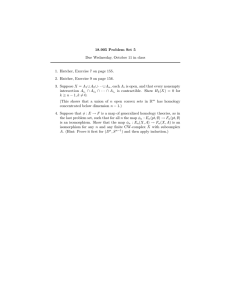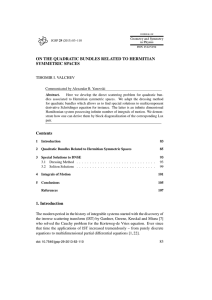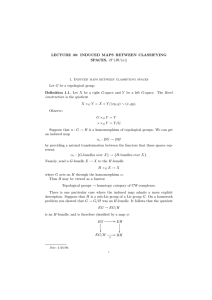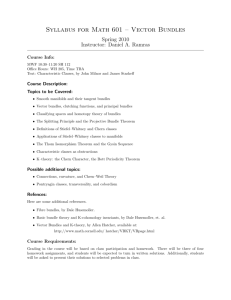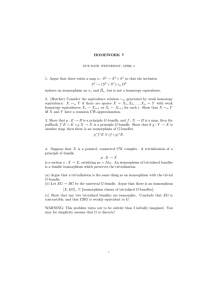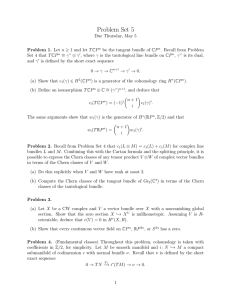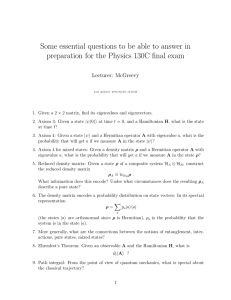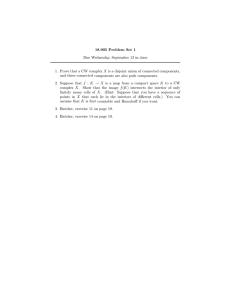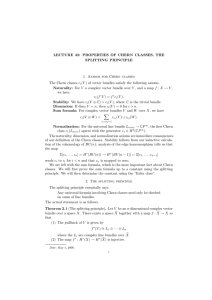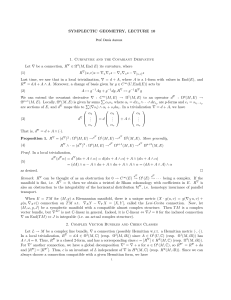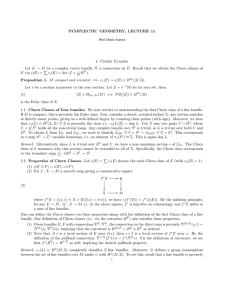LECTURE 29: LINE BUNDLES
advertisement
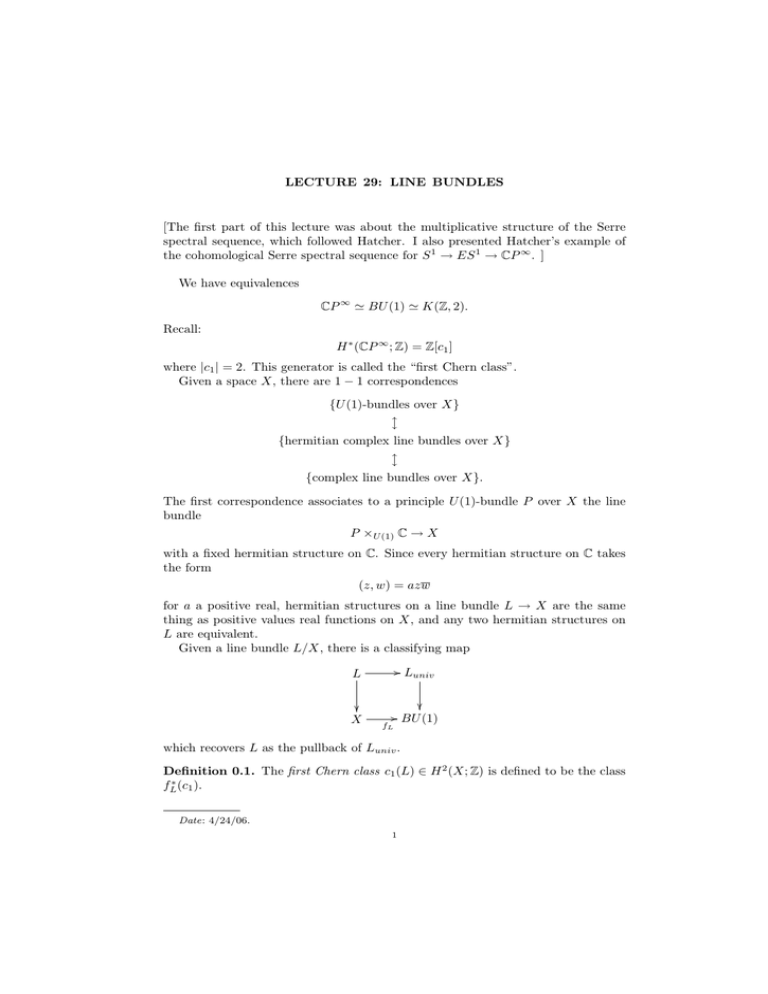
LECTURE 29: LINE BUNDLES
[The first part of this lecture was about the multiplicative structure of the Serre
spectral sequence, which followed Hatcher. I also presented Hatcher’s example of
the cohomological Serre spectral sequence for S 1 → ES 1 → CP ∞ . ]
We have equivalences
CP ∞ � BU (1) � K(Z, 2).
Recall:
H ∗ (CP ∞ ; Z) = Z[c1 ]
where |c1 | = 2. This generator is called the “first Chern class”.
Given a space X, there are 1 − 1 correspondences
{U (1)­bundles over X}
�
{hermitian complex line bundles over X}
�
{complex line bundles over X}.
The first correspondence associates to a principle U (1)­bundle P over X the line
bundle
P ×U (1) C → X
with a fixed hermitian structure on C. Since every hermitian structure on C takes
the form
(z, w) = azw
for a a positive real, hermitian structures on a line bundle L → X are the same
thing as positive values real functions on X, and any two hermitian structures on
L are equivalent.
Given a line bundle L/X, there is a classifying map
L
/ Luniv
X
/ BU (1)
fL
which recovers L as the pullback of Luniv .
Definition 0.1. The first Chern class c1 (L) ∈ H 2 (X; Z) is defined to be the class
fL∗ (c1 ).
Date: 4/24/06.
1
Proposition 0.2. The association
L �→ c1 (L)
gives an isomorphism
{complex line bundles over X} ∼
= H 2 (X; Z).
Proof. Under the equivalence BU (1) � K(Z, 2), c1 gives the fundamental class of
�
H 2 (K(Z, 2), Z).
Remark 0.3. A homework problem you were assigned indicates that if the left
hand side of the isomorphism in Proposition 0.2 is given the structure of an abelian
group by ⊗, then this is an isomorphism of groups.
2
